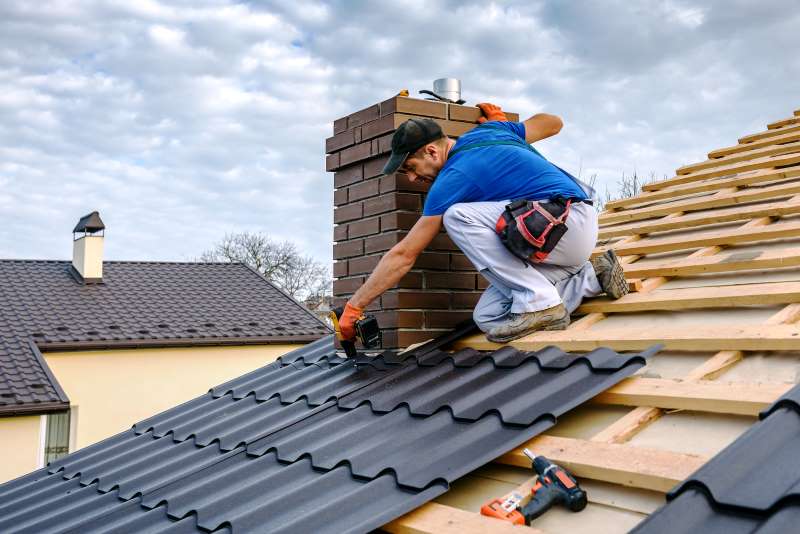How Long Your New Roof Will Last
Roofs are an important part of any home, and they should be given the proper care and attention to ensure that they last as long as possible. However, there are a number of factors that can affect the lifespan of a roof installment, Arlington and it’s important to be aware of them before you have a new roof installed. One of the most important factors is the climate. Roofs in colder climates will typically last longer than those in warmer climates because the extreme temperatures can cause damage to the shingles. The type of shingles also plays a role in how long your roof will last. Asphalt shingles are the most common type of shingle, and they typically last between 20 and 30 years. Tile and metal roofs can also be an option, and they often have a longer lifespan. The pitch of your roof can also affect its longevity. Roofs with a steep pitch will shed water more quickly, which can help to prevent damage from critters and rot.

Warning Signs You Need a New Roof
It’s never fun to think about replacing your roof. A new roof is a big investment, and it’s not something you want to have to do more often than necessary. However, there are a few warning signs that indicate it might be time for a new roof. If you’re experiencing any of the following problems, it’s time to call a roofing contractor:
– Roof leaks: Obviously, one of the clearest signs that you need a new roof is if your old one is leaking. Roof leaks can cause serious damage to your home, and they’re not always easy to spot. If you suspect you have a leak, call a professional to take a look.
– Sagging: Another sign that your roof is nearing the end of its life is if it starts to sag. This is usually caused by water damage or deteriorating joists. Either way, it’s not something you want to ignore.
– missing shingles: If you start to notice that shingles are missing from your roof, it’s time to call a contractor. This is usually a sign of wear and tear, and it can lead to more serious problems down the road.
– Daytime Ceiling Spots: If you start to see spots on your ceiling during the daytime, it’s probably time for a new roof. These spots are usually caused by leaks, and they won’t go away on their own.
Factors that Impact the Average Lifespan of Your Roof
The average lifespan of a roof is 20 to 30 years. However, there are several factors that can impact this timeline, both positively and negatively. For example, the material of your roof will play a role in how long it lasts. Metal roofs are known for their durability, while shingle roofs may need to be replaced more frequently. Another important factor is the quality of the installation. Roofs that are installed correctly and with high-quality materials are more likely to last longer than those that are not. Finally, the climate in which you live can also impact the lifespan of your roof. For instance, roofs in regions with extreme weather conditions (such as hurricanes or blizzards) may not last as long as those in more moderate climates. By taking all of these factors into account, you can get a better sense of how long your roof is likely to last.
Type of Materials:
There are many different types of materials that can be used for roof installation. The most common type of material is asphalt shingles, which are made from a mix of asphalt and fiberglass. Other popular options include metal Roofs, wood Roofs, and slate. Each type of material has its own advantages and disadvantages, so it’s important to consult with a professional before making a decision. Metal Roofs are known for their durability and long lifespan, but they can be very expensive. Wood Roofs are more affordable, but they require more maintenance than metal Roofs. Slate is a popular choice for luxury homes, but it’s also one of the most expensive options. Ultimately, the best type of material for your home will depend on your budget and your specific needs.
Quality of Materials:
When it comes to your roof, you want to make sure that you are using quality materials. The last thing you want is for your roof to leak and cause damage to your home. There are a lot of different Roofing Materials on the market, and it can be difficult to know which one is the best for your home. However, there are a few things that you can look for when choosing Roofing Materials. First, you want to make sure that the material is durable and will be able to withstand the elements. Second, you want to make sure that the material is easy to install. Third, you want to make sure that the material is available in a variety of colors so that you can choose the one that best fits your home. fourth, you want to make sure that the material is affordable. By keeping these four things in mind, you will be able to find Roofing Materials that are perfect for your home.
Underlayment:
Roof underlayment is a material used in roofing to provide secondary weatherproofing. It is applied under the shingles or other primary roof covering. Underlayment provides an additional layer of protection against wind-driven rain and ice dams. It also acts as a barrier to air infiltration, which can help to reduce energy costs. Roof underlayment is available in a variety of materials, including asphalt-saturated felt, rubberized asphalt, and non-asphalt synthetic products. When choosing an underlayment, it is important to consider the climate and the type of primary roof covering. In most cases, rubberized asphalt underlayment is the best choice for preventing leaks and protecting against extreme weather conditions.

